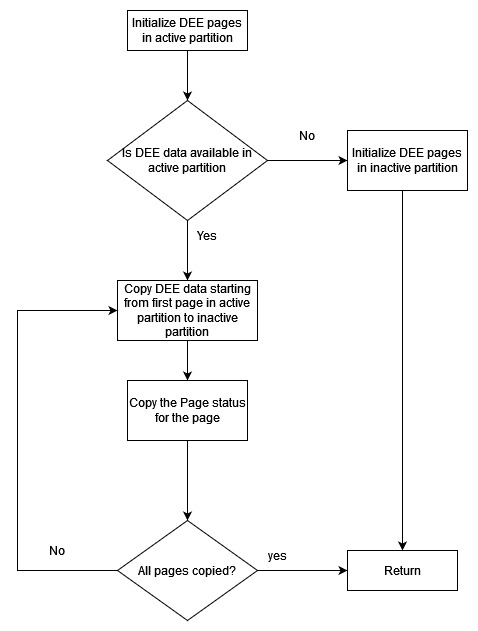11 DUAL PANEL OPERATION
In devices with dual flash partitions there can be execution switches . Execution switch can happen if there is a new version of the firmware available on the inactive partition through the live update feature. Through execution switch the new version of the application in the inactive partition can be executed , this makes the inactive partition active and active partition inactive.
In devices with dual panel support DEE Library uses the inactive partition to store the DEE data structure. The advantage of using the inactive partition to store DEE data structure is that there is no CPU stall during inactive flash panel programming, whereas the CPU stalls when programming the active flash panel. For better performances it is recommended to use inactive partition to store DEE data in devices with dual flash panel support.
In case of execution switch the DEE library first copies the data from the active partition(which was previously inactive partition) to the inactive partition(which was previously active partition) so that the data from the previous iteration is not lost.
INITIALIZATION OPERATION(DEE_Init()) in DUAL PANEL DEVICES:
If the “Copy DEE Data to Inactive partition after execution switch” check box is checked in the UI of the 16-Bit Data EEPROM Emulation module , then the initialization operation i.e. DEE_Init() has slight variation compared to DEE_Init() operation explained here.
DEE_Init() function first performs the DEE Page initialization in the active partition. It checks whether there is any data in active partition from the previous iteration , if the data is available then it copies the data from active to inactive partition. If there is no data available then it performs the DEE Page initialization in the inactive partition as shown in the below flow chart.

For details about DEE Pages initialization please refer DEE_Init()
